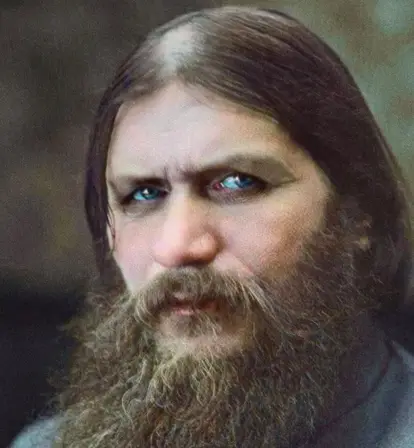Grigori Rasputin was a mystic and renegade monk who entranced the Romanovs — and ended up being assassinated in December 1916 for it.

Public DomainKnown as the “Mad Monk,” Russian mystic Grigori Rasputin grew to have such sway over the ruling Romanov family that he was eventually murdered by a group of jealous nobles in 1916.
For almost the entirety of Russia’s 370 years of tsarist rule, the country was sparsely populated and yielded virtually no industrial output. Serfdom was only abolished in 1861. And near the end of the empire, revolutionary ferment could be felt in the streets all over the country. Enter Grigori Rasputin, who was born into this turbulent world in 1869.
Though Rasputin was the son of rural peasants, he would ultimately rise to nearly the top of court society under the rule of Tsar Nicholas II. Transforming himself into a renegade monk and mystic, he used his mysterious charm and supposedly mesmerizing eyes to become one of the most important and infamous men in the country — and wield a surprising amount of control over the royal family.
But despite Grigori Rasputin’s incredible rise, he fell just as dramatically when he was killed by assassins in 1916, shortly before the country’s whole system blew up in warfare and revolution. Apparently, it was Rasputin’s fate to play a role in the last years of the regime from the heart of the royal court.
While many of us know the broad strokes of that tale, there are nevertheless a number of things that most don’t know about the “Mad Monk.” This is the bizarre story of Grigori Rasputin’s life — and his even stranger death.
Grigori Rasputin’s Humble Beginnings In Siberia
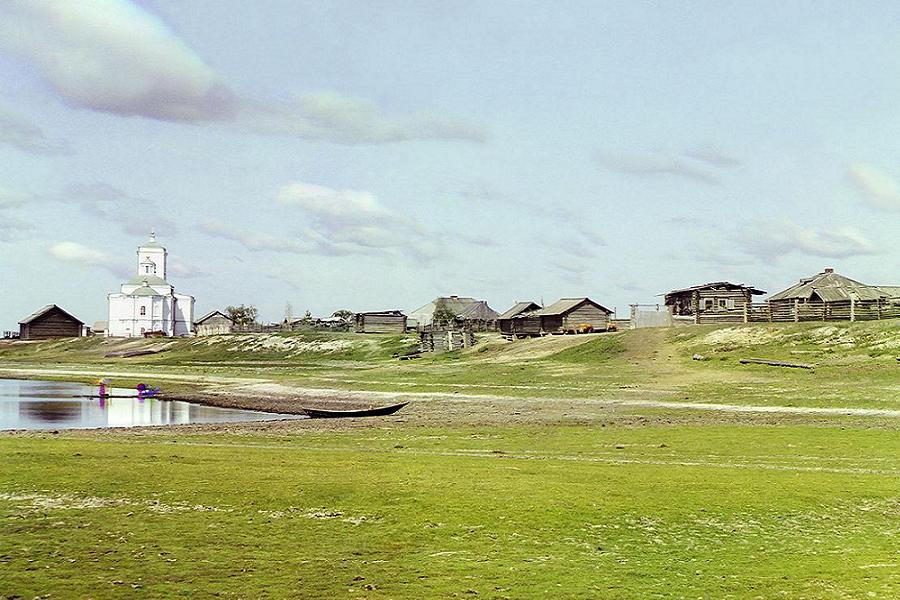
Wikimedia CommonsGrigori Rasputin’s hometown of Pokrovskoe in Western Siberia.
Before he was known as the “Mad Monk,” Grigori Rasputin came from perhaps the least promising background possible.
Rasputin was born in the small Western Siberian farming town of Pokrovskoe, which was hundreds of miles away from anything that wasn’t also a small rural town. He didn’t make enough of an impression to leave many records of his early life. But around 1887, he married a local peasant girl named Praskovia, and they had several children together.
Three of the children died young, which may have motivated Rasputin to make a pilgrimage to a monastery in Verkhoturye in 1892. While there, Rasputin reportedly went through the motions of work and prayer like the other pilgrims. But he also spent a lot of time outside the monastery with a hermit, who converted him to a fundamentalist version of orthodoxy that included vegetarianism and continuous penitence for sin.
After his conversion, Rasputin wandered Russia as a hermit for several years, though he usually returned to his family in time to help out with the planting and harvest in the town. But while he was on the road, he developed a gift for charming people. He could talk just about anyone into putting him up in their home and giving him free food as he preached to them.
Somewhere along the way, a rumor spread that he was a mystical healer. Never one to walk away from an opportunity like that, Grigori Rasputin decided to start treating injured and ill farmers with a mixture of faith healing, laying on of hands, scriptural teaching, and occasional common-sense advice about getting lots of rest and drinking plenty of fluids.
But not everyone appreciated his “services.”
Why Rasputin Was A Hard Man To Live With
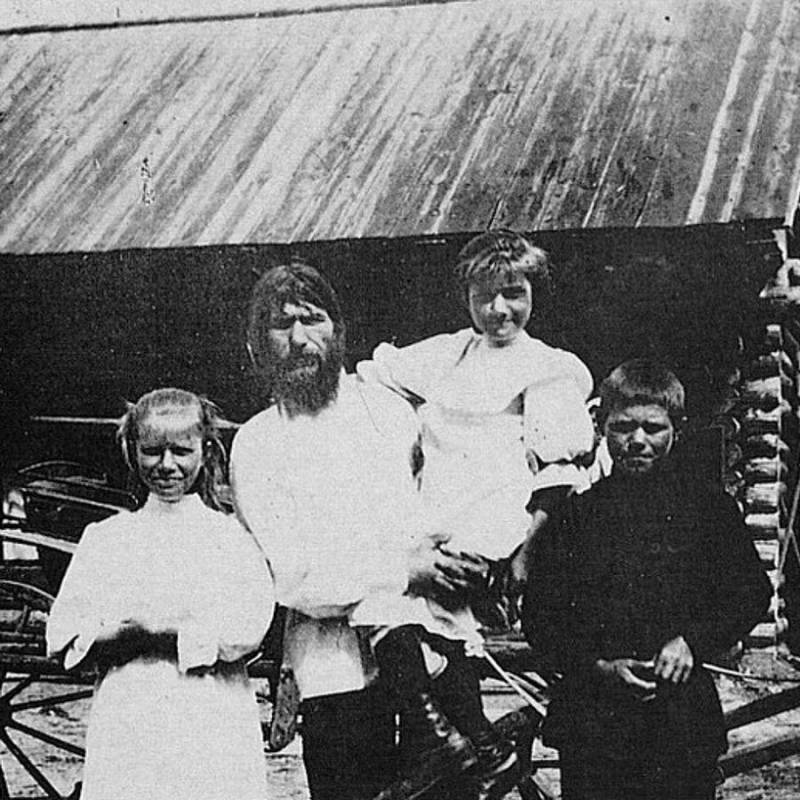
Wikimedia CommonsGrigori Rasputin with his family, showing his humble roots in his home village.
Grigori Rasputin didn’t drop the act when he returned home, which over the years grew increasingly rare. Every time he came back to his family’s house, he insisted on mandatory prayer and religious services that could last for hours. Every day was potentially an ordeal when Rasputin was home.
He “celebrated” every holiday, saint’s day, birthday, anniversary, and special occasion by forcing everyone to fast and kneel in prayer all evening. He forbade any work on the Sabbath, and instead of doing any work on the farm himself, he often convened religious meetings in the village square.
Meanwhile, his nonreligious activities were getting strange. At some point during his time as a hermit, Rasputin had developed a habit of talking to himself, though genuine religious hermits usually took vows of silence.
Rasputin also had a number of disturbing facial and body tics that made people around him nervous. While distracted or talking, his arms would jerk and his hands fluttered wildly. Sometimes, his whole torso would seize momentarily while he made a particularly emphatic point.
After the first few preaching sessions, the men of Pokrovskoe learned to live with his eccentricities — for their own safety. When Grigori Rasputin felt he was being mocked, he had a reputation for plunging into the crowd and pummeling as many men as he could while screaming damnation at them.
However, despite his alarming behavior, Rasputin managed to curry favor with some important people — who would usher him into his next chapter.
How The Mad Monk Made Powerful Friends

Wikimedia CommonsA young Grigori Rasputin, pictured with his fellow monks. The one on the right, Iliodor, may have staged the first attempt on Rasputin’s life. After the revolution, he finished his life as a janitor in New York.
Given the relative inactivity of Western Siberia, Grigori Rasputin started attracting crowds. Lacking a local church, Rasputin started holding religious services in his own house, complete with healings and miracles.
By 1902, the crowds at these events had gotten too large to fit into his home, so Rasputin took his show on the road again, this time for good. He set off on an overland journey to a monastery in Kiev, more than 1,800 miles away.
When he finished a year of religious instruction there — partly as a student and partly as a teacher — he again crossed the Russian steppe to Kazan, where he started meeting with bishops and aristocrats. There, Rasputin displayed the bluff confidence that he’d honed living by his wits as a hermit. And he ended up taking over religious instruction at the seminary.
He must have impressed somebody important, because within a year he was on his way, with letters of introduction, to the capital at St. Petersburg, where he would rub elbows with the rulers of the Russian Empire.
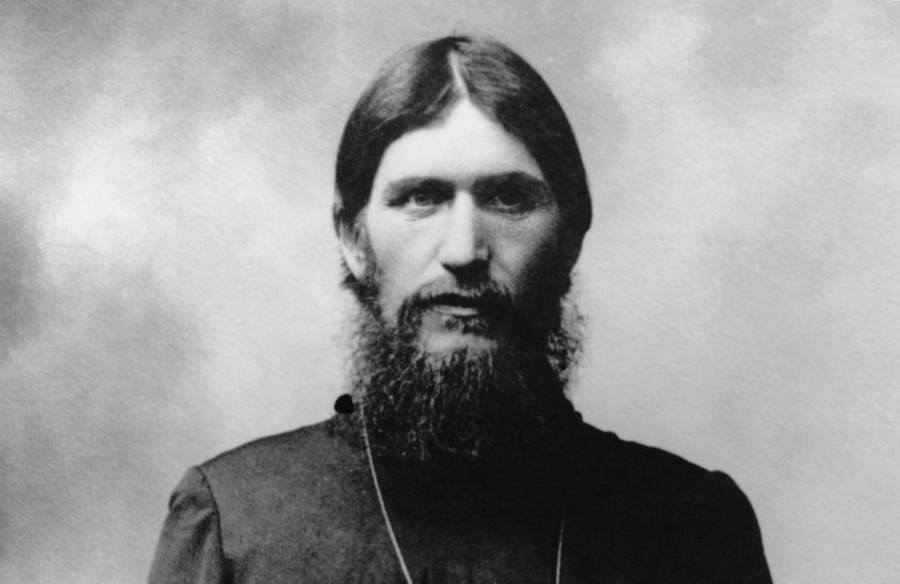
Wikimedia CommonsGrigori Rasputin, pictured in 1910.
Rasputin arrived in St. Petersburg at one of the most dangerous moments in its 200-year history. In 1904, Russia was badly losing a vicious war with Japan. Men across the country were being drafted and estates were being taxed to support a Far East conflict that seemed to be the tsar’s pet project.
When the Russian fleet was destroyed at Tsushima, riots erupted in the streets. Active revolutionaries in the crowds turned food riots and a labor disturbance into a full-blown revolt against the monarchy, which was swiftly put down with volleys of rifle fire from returning troops.
And once the violence finally ended, Vladimir Lenin and the other leading Bolsheviks had to go into exile.
Why Rasputin Also Made Powerful Enemies

National Portrait GalleryPrince Felix Yusupov (left), with fellow royal Prince Christopher of Greece and Denmark. Yusupov would later become one of the conspirators responsible for Grigori Rasputin’s death.
It’s possible that Grigori Rasputin barely noticed these upheavals. After all, during this time period, he was quite busy ingratiating himself with the local aristocrats and members of the royal family.
Or at least, he was trying to ingratiate himself. The Russian courtiers seemed to have had a low opinion of the peasant whose name loosely translates to “muddy one.” Rasputin’s life as a hermit and his low-born mannerisms — not to mention his tics — irritated St. Petersburg’s nobles. Meanwhile, his obvious efforts to schmooze with the Romanovs — especially daughters Maria, Tatiana, and Anastasia —further alienated the nobility.
Even more controversial, Rasputin was adored by a cult-like group of women he called his “little ladies.” They would fight over his dinner scraps, kiss his fingers just after he’d licked them, and regularly sleep with him despite the fact that he’d proudly go months without bathing.
But despite all the unappealing details about Rasputin, he still managed to charm his way into the court of Nicholas II, the last emperor of Russia. Crucially, he won over the then-pregnant Tsarina Alexandra with several flattering prophecies about her unborn child. Because of this, the latent dislike of Rasputin in aristocratic circles flared up into open hatred.
The tension only grew more serious after the birth of heir apparent Alexei Romanov, when his mother, Alexandra, turned to Rasputin for treatment and advice on managing the young prince’s hemophilia.
Rasputin’s advice — to stop giving the baby aspirin — helped alleviate some of Alexei’s symptoms and cemented his mother’s faith in the monk. By 1907, he was a regular caller at the palace and felt confident enough to advise the tsar on matters of state. While it’s unclear exactly how much influence he had in this arena, he had enough to make nobles feel threatened.
This provoked several powerful rivals to get Rasputin prosecuted within the church. Rasputin’s interpretation of the Bible had always been unusual, but now the Spiritual Consistory of Tobolsk was demanding a trial for heresy.
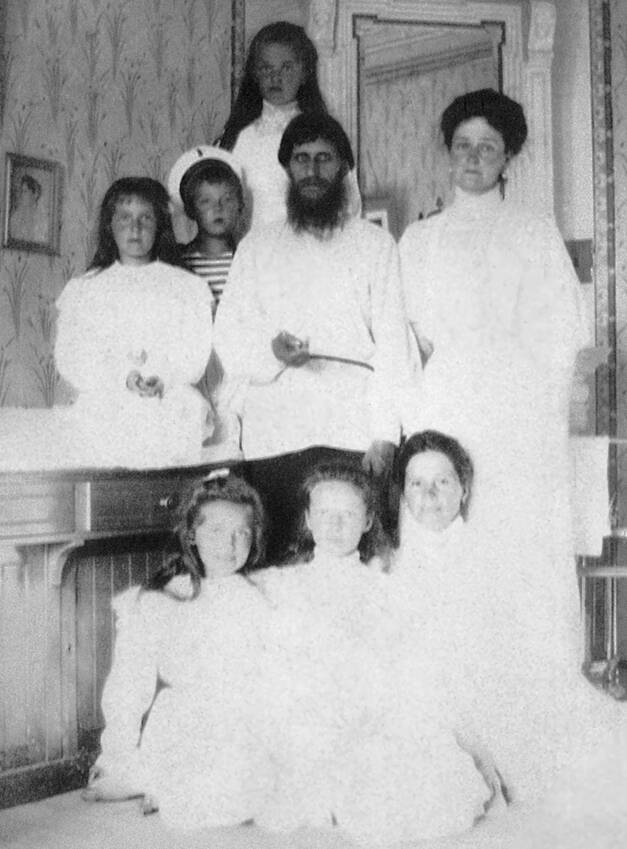
Wikimedia CommonsEmpress Alexandra Feodorovna with Rasputin, her children, and a governess in 1908.
Specifically, he was accused of holding beliefs similar to a suppressed Orthodox cult from Siberia, which if true would have seen him defrocked and possibly imprisoned. When he beat the rap in 1908, Grigori Rasputin’s prestige only grew. Even when he was accused of rape, he was still not even close to being removed from power. And by 1911, most of his enemies had either fallen out of favor with the Romanovs or had been exiled.
By 1912, the odd, sometimes violent monk from Siberia was arguably the main power broker in Russia. But his power wouldn’t last forever.
The First Attempt On The Mad Monk’s Life

Wikimedia CommonsGrigori Rasputin, pictured shortly before his death in 1916.
Anytime a peasant manages to position himself as close to an absolute monarch as Grigori Rasputin did, his enemies will start wishing he was dead. And some of them will go the extra mile and try to do the job themselves.
The first known attempt on Rasputin’s life, or at least the first one anybody noticed, came in the summer of 1914, on a day in July when Alexandra summoned him to the palace to discuss a threat of war from Austria.
Though he always rushed to the tsarina’s side when she called, this day Rasputin stopped in the street to give money to a person whom he thought was an old beggar woman. But the “beggar” was a disguised ex-follower of a fellow monk named Iliodor. While Rasputin was fishing through his pockets, the woman produced a dagger and struck him just above the navel.
But instead of falling down or going into shock from the pain, Rasputin ran to a nearby growth of trees and grabbed a stick, which he used to beat the fleeing woman. Iliodor then immediately went into hiding, and Rasputin spent the next few weeks recovering from his injuries.
The next few years were an absolute nightmare for Russia. War with Germany and Austria ground up entire armies and popular opinion at home quickly turned toward peace at any price.
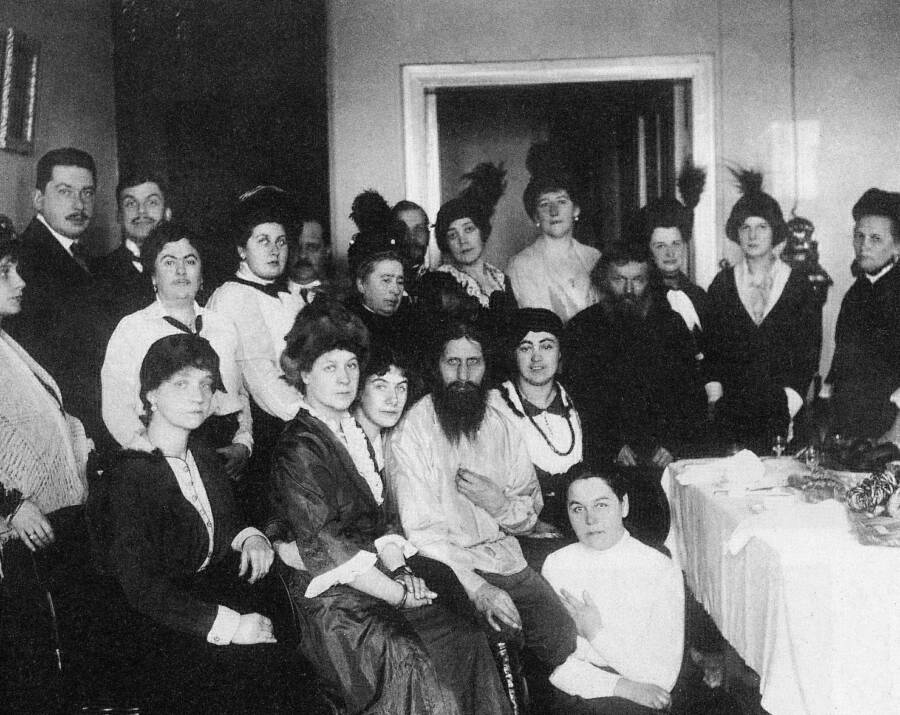
Wikimedia CommonsGrigori Rasputin surrounded by some of his many followers and admirers in 1914.
But through it all, the aristocracy was deep in denial. The Romanovs and their courtiers firmly believed that the war could be won, and talk of surrender was grounds for banishment from the court.
Rasputin, who obviously came from a different background, saw things differently. By 1916, he was secretly conspiring with some of the more realistic members of the court to force the tsar into negotiations. But one of the conspirators’ meetings was abruptly broken up when a relative of the tsar, Prince Felix Yusupov, walked in on them unannounced.
Later, Yusupov would write that he and Rasputin had spent long evenings together talking about politics and that the former peasant had tried to talk him into supporting peace on the grounds that it was the only way to save the monarchy and avoid a civil war. But as far as the prince was concerned, this was treason — and he resolved to do something about it.
The Brutal Death Of Grigori Rasputin
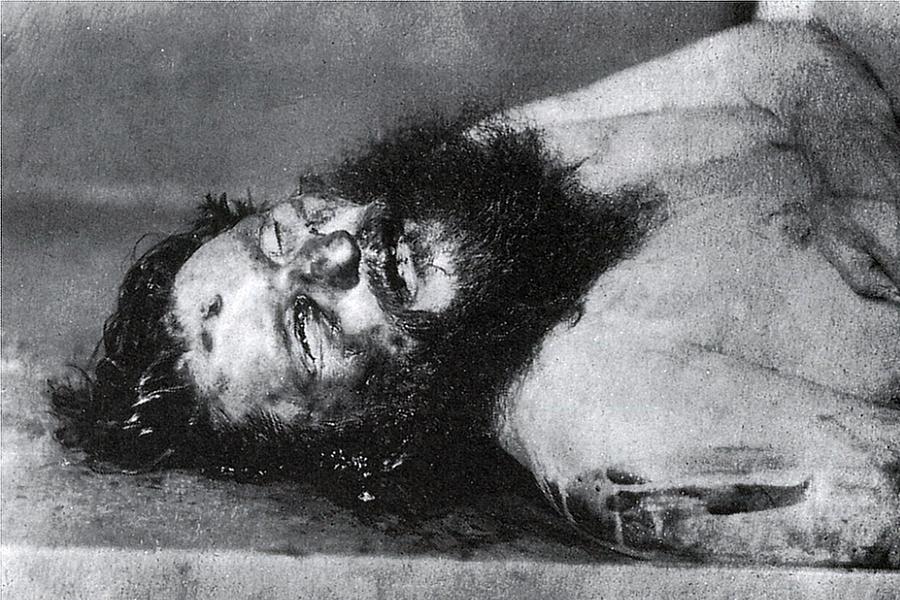
Wikimedia CommonsGrigori Rasputin’s death shocked Russia’s royal family — who would soon be killed as well when the Bolshevik Revolution put an end to their rule.
Felix Yusupov was quite a character. Born into a line of increasingly mad aristocrats — his father had a fetish for eating dinner in different rooms every night, his aunt bred silkworms that filled every room of her estate, and his grandfather arranged marriages among his peasants to selectively breed girls for their beauty — the prince and his friends had spent their youth drinking and gambling, as well as occasionally dressing up as women.
Yusupov was married to the tsar’s niece, and they were actually visiting Germany together when the war first broke out. The Germans initially detained them, but by pulling a lot of strings, Yusupov had managed to get his family back to Russia just a few months into the hostilities.
Though they often met for talks, Yusupov despised Rasputin. As Yusupov later wrote: “…with his caftan, baggy breeches, and great top-boots he looked exactly what he was — a peasant. He had a low, common face.” Of the meeting Yusupov broke up, he said he saw Rasputin in the group:
“[S]urrounded by seven shady-looking men. Four of them were of a distinctly Jewish type, the other three were fair and curiously alike in appearance [Felix took them to be German agents]…They looked like a group of conspirators.”
If Yusupov was right and they were indeed conspirators, then they were Russia’s last hope. If Rasputin had actually managed to negotiate peace with Germany in the winter of 1916, the Kerensky Coup and later Bolshevik Revolution would probably not have happened. There would have been no civil war, no Great Purge, no Stalin, and maybe even no World War II.
That wouldn’t do for Yusupov. With an uncharacteristic decisiveness, he planned Rasputin’s death and the end of any talk of peace with Germany.
On the night of December 29, 1916, a group of nobles who feared Grigori Rasputin’s influence on Russia’s royal family — including Yusupov — conspired to assassinate him. But even though the assassins poisoned him, shot him, and violently beat him multiple times, he simply “refused” to die — until they threw him into a freezing river.
As Yusupov recalled, “This devil who was dying of poison, who had a bullet in his heart, must have been raised from the dead by the powers of evil. There was something appalling and monstrous in his diabolical refusal to die.”
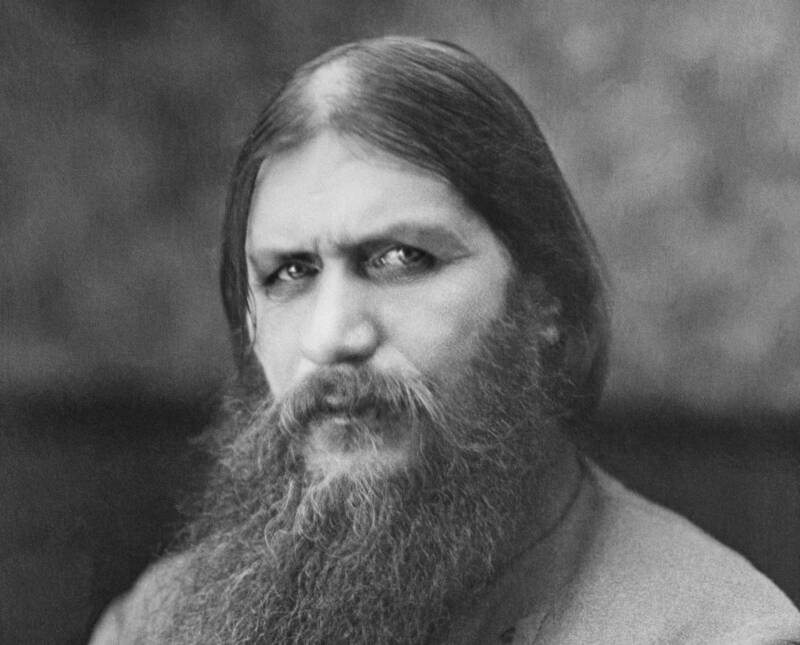
Wikimedia CommonsRussian mystic and holy man Grigori Rasputin gained enough influence over Russia’s royal family that he was killed by jealous nobles in 1916.
While Grigori Rasputin’s death did eventually come, he is still thought to have been one of the hardest men to kill in all of history. And considering the plans he was making to secure peace in his country before he died, one has to wonder what may have happened if he had lived — and succeeded.
By killing Grigori Rasputin, his assassins not only eliminated their enemy but may have also unwittingly altered world history forever.
After reading about Grigori Rasputin’s bizarre life and death, explore the bizarre story of Rasputin’s infamous penis. Then, learn what happened to the Mad Monk’s daughter, Maria Rasputin, after her father’s death.
